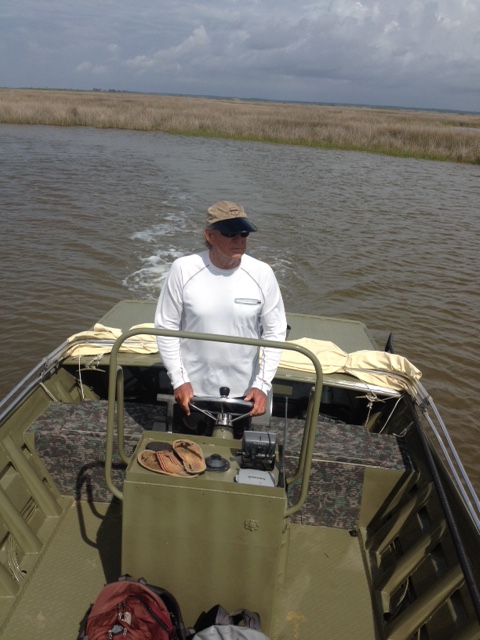
by Rick O'Connor | Dec 17, 2021
Recently I watched a documentary on TV entitled The Loneliest Whale; the search for 52. The title grabbed my attention and so, I checked it out.
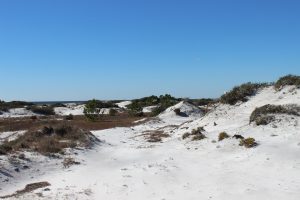
There are many forms of wildlife that are very hard to find in our area. But we continue to look.
Photo: Rick O’Connor
Seems a decade or so ago the U.S. Navy was doing SONAR work in the Pacific between Washington and Alaska and detected a strange sound coming in at 52 hertz. They had not herd this before and would continue to hear it in different locations around the northern Pacific. Their first concern was it was something new from the Russians, but when they showed the graphs and played the recording to a marine mammologist named Dr. Watkins, they found that it was most likely a “biological” – mostly likely a whale.
The problem was that Dr. Watkins had never heard whales calling at 52 hertz. If it was a whale, it was calling a lot – but no other whales were answering. Hence the name “the loneliest whale”. If it was a whale, and no others would talk to it, it was kind of sad. But who was this whale? What kind was it?
Word of the loneliest whale spread around the world and many humans made a connection to this animal, possibly because of their own disconnect with their own species. Stories and ballads were written, and people began to feel for the poor animal that apparently had no friends.
This story caught the attention of a documentary film maker who was interested in finding “52”, as the whale became known. He solicited the help of other marine mammologists; Dr. Watkins had died. According to those marine mammologists, this was going to be VERY difficult. It is hard enough to find just a pod of whales in the open Pacific, much less a specific pod with a specific individual. But they were excited about the challenge of finding this one animal, “52”, and off they went.
As I was watching this documentary it reminded me of my own search here near Pensacola. In 2005, I was asked by members of state turtle groups if I could search to see if diamondback terrapins lived in the western panhandle. This turtle’s range is from Cape Cod Massachusetts to Brownsville Texas, but there were no records from the Florida panhandle. Did the animal exist there? I was running the marine science program at Washington High School at the time and thought this would be a good project for us. So, we began.
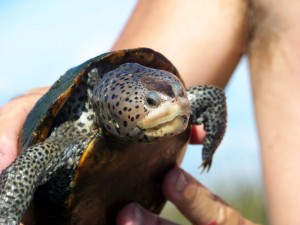
Mississippi Diamondback Terrapin (photo: Molly O’Connor)
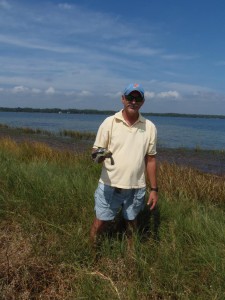
This small turtle can be held safely by grabbing it near the bridge area on each side.
Photo: Molly O’Connor
The students researched terrapin biology and ecology to determine the locations with the highest probability of finding, and we searched. I quickly found that the best time to search for terrapins was during nesting in May and June, and that the worst time to do a project with high school seniors was May and June. So, the project fell on my wife and me. For two years we searched all the “good spots” and found nothing. We placed “Wanted Poster’s” at boat ramps near the good spots with only calls about other species of turtles, not the terrapin.
Then one day in a call came in from a construction worker. Said he had seen the turtle we were looking for. For over a year we had been chasing “false calls” of terrapins. So, I was not overly excited thinking this would be another box turtle or slider. I asked a few questions about what he was looking at and he responded with “you’re the guy who put the wanted poster up correct? – well your turtle is standing next to the poster… it’s the same turtle”. Now I was excited. We did some surveys in that area and in 2007 saw our first terrapin! I can’t tell you how exciting it was. Two years of searching… at times thinking we might work on another project with a different species that actually exists… reading that the diamondback terrapin is like the Loch Ness monster – everyone talks about them, but no one has ever seen one. And there it was, a track in the sand and a head in the water. Yes Virginia… terrapins do exist in the Florida panhandle. The excitement of finding one was indescribable.
We were hooked. We now had to look in other counties in the panhandle, and yes, we found them. As I watched the program of the marine mammologists searching for “52” I could completely relate.
Today, as a marine educator with Florida Sea Grant, I train others how to do terrapin surveys and searches. I let them know how hard it is to find them and to not get disappointed. When they do see one, it will be a very exciting and fulfilling day. Our citizen science program has expanded to searching for other elusive creatures in our bay area. Bay scallops, which are all but gone however we do find evidence of their existence and spend time each year searching for them. In the five years we have been searching we have found only one live scallop, but we are sure they are there. We find their cleaned shells on public boat ramps – by the way, it is illegal to harvest bay scallops in the Pensacola Bay area. Another we are searching for is the nesting beaches of the horseshoe crabs. This is another animal that basically disappeared from our waters but are occasionally seen now. It is exciting to find one, but we are still after their nesting beaches and the chase is on.
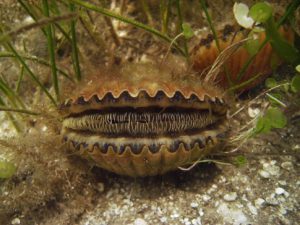
Bay Scallop Argopecten irradians
http://myfwc.com/fishing/saltwater/recreational/bay-scallops/

Horseshoe crabs breeding on the beach.
Photo: Florida Sea Grant
I love the challenge of searching for such creatures. If you do as well, we have a citizen science program that does so. You can just contact me at the Escambia County Extension Office to get on the training list, trainings occur in March, and we will get you out there searching. As for whether they found “52”, you will have to watch the program 😊

by Ray Bodrey | Apr 20, 2021

Scott Jackson, UF/IFAS Extension Bay County & Florida Sea Grant
Ray Bodrey, UF/IFAS Extension Gulf County & Florida Sea Grant
Erik Lovestrand, UF/IFAS Extension Franklin County & Florida Sea Grant
Can you remember where you were one year ago last April? The uncertainty of each day seemed to go on forever. At this time last year, we were planning several education programs that eventually had to be canceled or migrated to online events. Scallop Sitters was one of our cooperative volunteer programs with Florida Fish and Wildlife (FWC) that was postponed during the pandemic in 2020. Thankfully, FWC biologists continued restoration work last year in the region with good results and steps forward. However, there was something painfully absent in these efforts – you!
One of the lessons last year taught us, is to appreciate our opportunities – whether it is to be with your family, friends, or serve your community freely through volunteer service. Some new service opportunities appeared while others were placed on hold. Thankfully, we are excited to announce the Scallop Sitters Citizen Scientist Restoration Program is returning to our area in St. Andrew, St. Joe, and Apalachicola Bays this summer!
Historically, populations of bay scallops were in large numbers and able to support fisheries across many North Florida bays, including St Andrew Bay. Consecutive years of poor environmental conditions, habitat loss, and general “bad luck” resulted in poor annual scallop production and caused the scallop fishery to close. Bay scallops are a short-lived species growing from babies to spawning adults and dying in about a year. Populations can recover quickly when growing conditions are good and can be decimated when conditions are bad.
An opportunity to jump start restoration of North Florida’s bay scallops came in 2011. Using funding as a result of the Deepwater Horizon Oil Spill, a multi-county scallop restoration program was proposed and eventually established in 2016. Scientists with FWC use hatchery reared scallops obtained from parents or broodstock from local bays to grow them in mass to help increase the number of spawning adults near critical seagrass habitat.
FWC also created another program where volunteers can help with restoration called “Scallop Sitters” in 2018 and invited UF/IFAS Extension to help manage the volunteer portion of the program in 2019 which led to targeted efforts in Gulf and Bay Counties.
After a year’s hiatus, UF/IFAS Extension is partnering with FWC again in Bay and Gulf Counties and expanding the program into Franklin County. Despite initial challenges with rainfall, stormwater runoff, and low salinity, our Scallop Sitter volunteers have provided valuable information to researchers and restoration efforts, especially in these beginning years of the program.
Volunteers manage predator exclusion cages of scallops, which are either placed in the bay or by a dock. The cages provide a safe environment for the scallops to live and reproduce, and in turn repopulate the bays. Volunteers make monthly visits from June until January to their assigned cages where they clean scallops removing attached barnacles and other potential problem organisms. Scallop Sitters monitor the mortality rate and collect salinity data which determines restoration goals and success in targeted areas.
You are invited! Become a Scallop Sitter
1.Register on Eventbrite
2.Take the Pre-Survey (link will be sent to your email address upon Eventbrite Registration)
3.View a Virtual Workshop in May
4.Attend a Zoom virtual Q & A session in May or June with multiple dates / times available
5.Pick up supplies & scallops on June 17 with an alternate pick-up date to be announced
UF/IFAS Extension is an Equal Opportunity Institution.
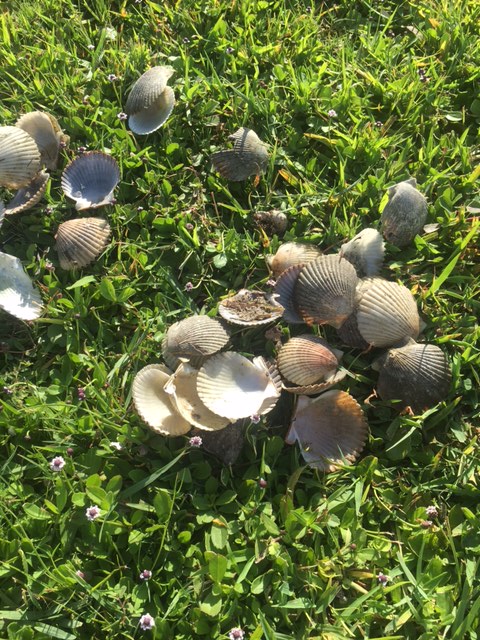
by Rick O'Connor | Sep 9, 2019
Many people enjoy scallops. Just as many enjoy scalloping.
It is a great Florida family activity where everyone gets to snorkel in relatively shallow – safe waters. You explore the grassbeds for a myriad of cool marine creatures yelling across the bay to friends about all the neat things you are seeing.

Bay Scallop Argopecten iradians
http://myfwc.com/fishing/saltwater/recreational/bay-scallops/
And of course, there are the scallops. Sitting on top of the grass blades with their undulated ridged shells and ice blue eyes. You reach to grab one and they begin the “clap” their shells together to escape being captured. You finish the adventurous day with your limit of scallops, and it is time to eat – broiled in butter and some seasoning is my favorite.
It is great fun. However, it is becoming harder to find them.
Once found in grassbeds from Pensacola to Miami, the recreational harvest has been restricted to the Big Bend area – the commercial no longer happens. Everywhere their numbers are down and many locations within their historic range, you cannot even find them. Since 2015, Florida Sea Grant has conducted scallop searches in the Pensacola Bay area using citizen volunteers and have found only one live animal. We have found numerous shells of these creatures, who only live a year… maybe two. We have had reports of live scallops in the bay area outside of our formal search dates, I have personally found some, but the numbers are still very low – low enough that recreational harvesting in the Pensacola Bay area is closed indefinitely.
The story is the same from south of the Big Bend. Scallop searches are conducted every year and returns are low, or non-existent. So, the focus turns the Big Bend.
They are famous for the scallop seasons. Floridians travel from all neighboring counties, and from across the state, to partake in this fun activity. It is good business for these local communities. For some, it is the biggest money maker of the year. However, now we are hearing stories of low harvest numbers in some parts of the Big Bend. In recent years, Port St. Joe Bay has suffered from algal blooms and red tide that not only closed the waters to harvesting for swimming safety reasons, but because the scallop numbers declined as well. One story out of Hernando County indicated that the numbers in this region are now down. You must consider overharvesting as a problem as well.
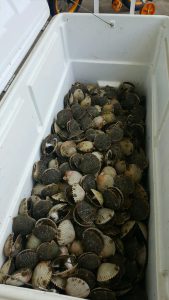
Prepared properly: One of the finest meals you will ever have.
FWC is interested in restoring these animals to parts of their range where they were once common. The Scallop Sitters program is one where volunteers can hang caged scallops raised in state hatcheries from their docks, protected from predators, and allow them to mass spawn. The first pilot project in our area was in Bay and Gulf counties… last year… when Hurricane Michael came through. Obviously, they will have to start over.
What is needed to extend this project into other bay areas?
Well, you certainly do not want to put them into waters where you know they will die. The scallop populations declined for a reason – primarily habitat loss and overharvesting. Excessive stormwater runoff decreased much needed salinity and increased grass killing turbidity. Loss of seagrass equates to loss of scallops. Florida Sea Grant is currently working with the University of West Florida, and citizen volunteers, to monitor seagrass growth and density in Santa Rosa Sound and Big Lagoon. We will have a report on this year’s work later this fall. We are also working with citizen scientists monitoring salinity in these bodies of water hoping for a mean of 20 parts per thousand or better. We will have the summer salinity reports out at the end of September. We hope these data will support the argument of extending the scallop sitters program further west.
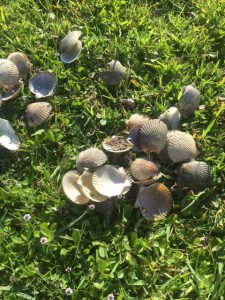
A pile of cleaned scallops found in a parking lot on Pensacola Bay. harvesting scallop in Pensacola Bay is illegal.
Photo: Rick O’Connor
But there is the question of overharvesting.
In recent years we have found evidence of locals in the Pensacola Bay area illegally harvesting the few scallops we have. Some residents do not know that it is illegal to harvest in these waters – it is – and the only way we can successfully restore them, is allow them to mass spawn. To do this, we need large numbers.
Each year Florida Sea Grant conducts the Great Scallop Search in the Pensacola Bay area. We also host a “Bio-Scavenger Hunt” in the fall where scallops are one of the target species. If you are interested in volunteering, contact Rick O’Connor at the Escambia County Extension Office – (850) 475-5230 ext. 111, or roc1@ufl.edu.

by Erik Lovestrand | Aug 25, 2017
Many species of animals go through dramatic swings in population numbers over time. For some, these fluctuations are related to the dynamics of a natural symbiotic connection such as a predator-prey relationship. A classic example of this is the famous snowshoe hare/lynx model taught to all wildlife ecology students. The lynx numbers follow the hare numbers with a lag in the population upswings and downswings. For other species, it may simply be related to changing environmental conditions that they either do not tolerate well or that they thrive in. This is primarily the case with our panhandle bay scallop populations from year to year. During the time I’ve lived in North Florida I’ve experienced both ends of the spectrum during local scallop seasons. Some years, you can limit-out as fast as you can pluck them from the sea grass bed. Other times, the old adage of “finding a needle in a haystack” comes to mind. Over the past few years we have experienced some of these dramatic swings for various reasons.

Bay Scallop Argopecten iradians
Bay scallops are mostly an annual species, with spawning taking place as water temperatures drop quickly during fall cold fronts. Harvest numbers the following summer are a result of larvae that matured in a single season. Occasionally, you will find an old “mossy-back” that is significantly larger and likely a holdover from the previous season. During spawning, a single scallop can release millions of eggs but very few survive to adulthood and throughout their brief lifespan they are susceptible to many mortality factors.
Predation by crabs, sea stars and several species of marine snails takes a toll but is generally not the driving force in significant declines.
One factor that does have population-level impacts is the amount of rainfall locally. Too much freshwater will create physiological stress and kill scallops over large areas. They can also be hammered by extreme heat or cold events due to their nature of inhabiting relatively shallow coastal waters. Other population pressures may not be so obvious because they sneak up on scallops gradually rather than happening all of a sudden. Factors such as propeller scarring in seagrass beds and siltation from terrestrial runoff or human activities, can have a cumulative effect that gradually degrades the seagrass habitat where scallops live. Another factor that can cause near-extinction of local populations is the occurrence of harmful algal blooms such as red tide. The toxins produced by these marine dinoflagellates will kill fish, marine mammals and shellfish alike. This is what happened to the scallops in St. Joseph Bay during the fall of 2015 when a red tide bloom killed most of the spawning population.
A more recent event in St. Joseph Bay, that put a damper on the 2017 season, was a bloom of a different marine dinoflagellate species known as Pseudo-nitzschia. This organism can produce a toxin known as domoic acid which can cause amnesic shellfish poisoning in humans. Thankfully, it is not expected to harm the shellfish themselves and next season may be a real bumper year. That is, if everything else that can go wrong for a scallop decides to give them a bit of a break. When environmental conditions are good, it is astounding what Mother Nature will provide. Put on your snorkel gear and check it out! For information on seasons and more detailed biology visit the Fish and Wildlife Research Institute’s webpage here. For some tasty recipes check out the Fresh From Florida page here.
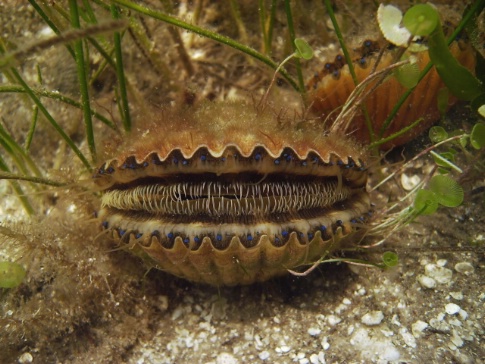
by Mark Mauldin | Jul 1, 2016

Bay Scallop Argopecten iradians
http://myfwc.com/fishing/saltwater/recreational/bay-scallops/
If you had plans to go scalloping in St. Joseph Bay over the long holiday weekend I’m afraid you are going to be disappointed. FWC has postponed the opening day of scallop harvesting season in St. Joseph Bay until August 22.
The postponement, along with other conservation efforts, is intended to provide the scallop population in St. Joseph Bay additional time to recover from the effects of the Red Tide event we experienced last fall. Scallop season in St. Joseph Bay will start later, end earlier, and have tighter bag limits than the rest of the Bay Scallop Harvest Zone – “the Pasco-Hernando County line (near Aripeka – latitude 28 degrees, 26.016 minutes North) to the west bank of the Mexico Beach Canal in Bay County (longitude 85 degrees, 25.84 minutes West)”(FWC). Below are several figures regarding the 2016 Bay Scallop season in St. Joseph Bay. All of the figures are courtesy of FWC.
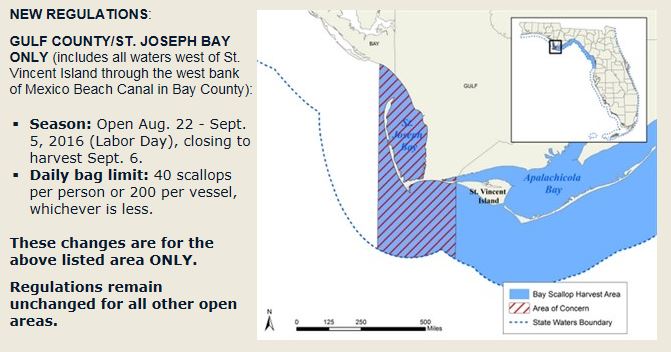
http://myfwc.com/fishing/saltwater/recreational/bay-scallops/
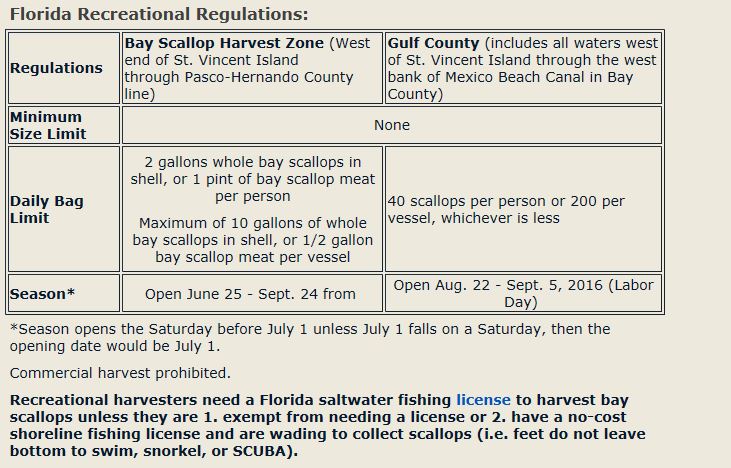
http://myfwc.com/fishing/saltwater/recreational/bay-scallops/

http://myfwc.com/fishing/saltwater/recreational/bay-scallops/
Here’s the bright side, even with scalloping on hold for a while, here in NW Florida we have tons of other opportunities for fun on the water. If you were ready to go scalloping then you likely already have a saltwater fishing license, a boat, and a family that is ready to go have fun. You can still put all of these to good use – go fishing.
One of the most attractive aspects of scalloping is that it is, quite frankly, easy. It’s fun for the whole family, even those with shorter attention spans. Fishing can be easy too, if you target the right species. When looking to entertain the family don’t think about trying to catch the trophy that will be the envy off all your friends, think about fish that are easy to find and eager to bite. The following are a few species to target that I think fit this scenario nicely.
Sand Perch – If you are dealing with anglers that are very inexperienced and casting is an issue Sand Perch are an excellent option. They prefer deeper bay waters with sandy bottoms. The deeper water allows for bait to be dropped vertically, no casting necessary. ½ of a live shrimp on a #2 or 1/0 hook with enough weight to get to the bottom, is all you need. These little guys bite very aggressively and generally when you find one there will be many more in the area. If you want fish for supper, Sand Perch taste very good but the smaller ones have very little meat.
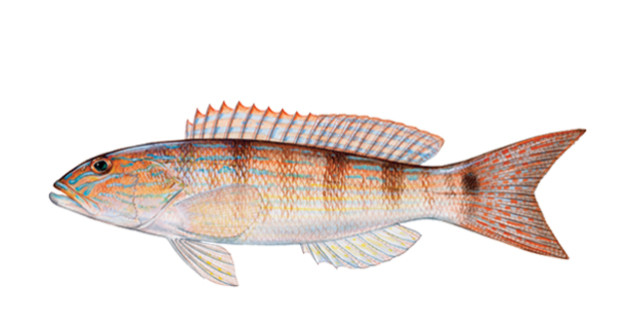
Sand Perch – Diplectrum formosum http://floridasportfishing.com/sand-perch/
Ladyfish – The “poor man’s tarpon” is often found over the same flats where you would go to find scallops but likely in slightly deeper water. These acrobatic fish will readily eat a wide variety of offerings, anything resembling a shrimp or bait fish (live or artificial), as long as it is moving up in the water column, not lying on the bottom. Ladyfish generally travel in schools and put on quite a show when hooked. Unfortunately, they are generally considered unfit to eat and they have a nasty habit of defecating when they are lifted from the water. (When I hook one I generally fight it to the boat, then give it some slack line which it will use to sling the hook from its mouth, thereby avoiding having to lift the fish from the water and the subsequent mess.) Mess aside, these fish are really a lot of fun to catch.
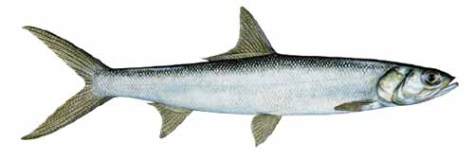
Ladyfish – Elops saurus
http://www.captivafishing.net/?p=772
Spotted Sea Trout – A game species that is highly regarded throughout the coastal waters of Florida that is almost two fish in one. Big, “gator” trout are widely sought by anglers and can be very difficult to catch; that’s not the fish we’re after here. Juvenile trout are much easier to catch than their more mature counterparts. A live or artificial shrimp drifted under a cork over seagrass beds is a simple but very effective recipe for catching trout. Most “serious” anglers will leave an area when they start to catch “shorts”, that’s exactly where you want to be for lots of fast paced action. Just because they are small doesn’t mean they are not fun to catch. A couple of things to remember with trout; 1) they are a regulated species so make sure you know the rules if you are planning on keeping fish, 2) they are fairly fragile fish and should be handled gently with wet hands and returned to the water quickly. Visit catchandrelease.org for additional fish handling tips.
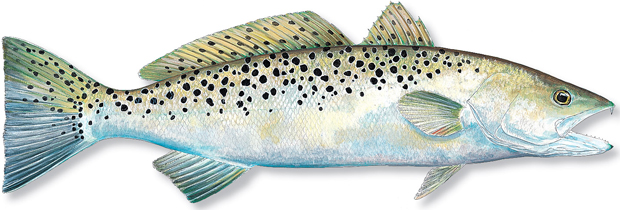
Spotted Sea Trout – Cynoscion nebulosus
http://www.floridasportsman.com/sportfish/seatrout/
There are many other species that I could have mentioned; catfish, bluefish, blue runners, and even pin fish can all help make for a day on the water fun for the whole family. It’s all about mindset, look for lots bites and bent poles not trophies. Don’t let the delay of scallop season delay your family’s fun on the water this summer – go fishing.



















